The technology has grown in times! It has become one of the most important factors for business growth. But, with immense growth, there come more vulnerabilities. Also, it opens up loopholes as an invitation for hackers. Multi-level marketing Software is no different and as the industry consists of millions of distributors & customers, it's a huge risk!
Yes, MLM Software helps one to cut the difficulty arising in MLM business. And that too with the custom functionalities included in the package. Complete business is thus handled with a single package. But what if some malware or similar attack thrash the system? Millions of dollars flow in & out of the system and can you risk such plentiful of money with a cheap system that offers low-security measures? You might not be aware of the security issues in an MLM or direct selling software.
We gathered all the common vulnerabilities that might raise in a web-based package from the experts in the network security field. There are 10 must known security vulnerabilities one must know before choosing a package. We will guide you on how to deal with such situations without any terrifying moments of loss of data & money.
1. Cross-Site Request Forgery (CSRF)

One of the most common attacks that trigger the users to get into the trap from the attacker. You click on an unknown link attached to the mail or even from a user command in a web forum. It makes you (user) to execute actions that are not even initialized by you.
It can manipulate an action to change the password or similar things without your actual control. It can also gain control of the entire user account too.
The attacking mode:
Usually, the method of attack works like the below,
- The attacker creates a forged request through email
- Someone clicks the link and become a prey
- The attacker gets the complete access of the account or makes a user do any action without any awareness
- The entire data is vulnerable to manipulation if the victim clicks the link from an untrusted source.
How the attack affects your system?
In the case of an MLM Software, the users might get a false link and once the user clicks on it, boom, you’re a victim. Let us make it simpler.
You get a forged bank transfer request from the attacker end. You might not identify it because it’s a modified script version of the actual admin request.
At present, you’re logged into your account. Upon clicking the link, you lose the money requested into an attacker’s bank account.
“The money is now sent to admin’s account", this might be your thought. But in reality, the money is sent to the attacker.
The solution:
As we mentioned earlier, it will be very difficult to distinguish between the forge and the real authentication request. The best method to have an ‘untouched’ true distinguishing factor is implementing Anti-CSRF tokens.
The server calculates two separate tokens to find out the forgery, where one token is sent to the form as a hidden field and other with the cookie. Once the user submits the request, it will be sent back to the server. The server compares them both and validates them. If found mismatch/malicious then the request will get canceled and thus the attack will get out of the radar.
2. Cross-site scripting (XSS)
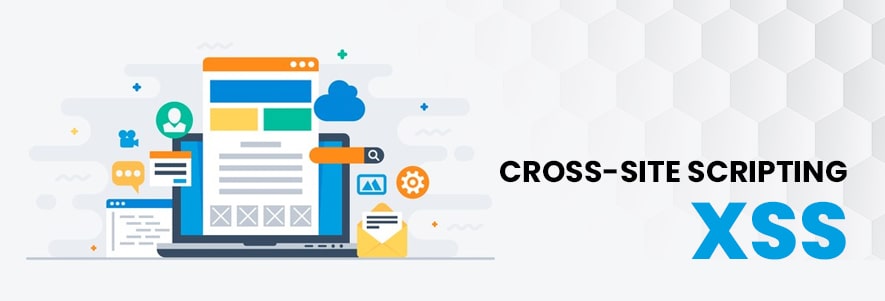
Let us explain this type of attack in simple words, the attacker will attach a malicious code in the website script. Once the user loads them on their website, they will become the victims of the attack.
The attacking mode:
Usually, a client-side code injection type of attack, the malicious script attached in the script and sent to the user in many ways. If this malicious script executes, then the private data will be open up to the attacker and it will then be easy to access the database.
These scripts are sent to the user via email or through a fake page or an online advertisement. The code will be thus executed through the browser and will run every time the user calls this function.
Now you may wonder what is the difference between XSS and CSRF attacks. Let us provide the reason, in CSRF, attacker aims to trick the user to make an unintended session request. Whereas XSS makes the user execute the malicious code. Both of them are client-side attacks and intends to attack the users instead of exploring the server vulnerabilities.
How the attack affects your system?
The attacker will attach the malicious code on your website via a forum. If you click on it or do something when your account is active then your cookies get stolen.
In simple words, your account details and sensitive data gets exposed to the attacker. The attacker gains full control over the account by now. He can now get access to the entire user account and perform all the user functionalities.
The solution:
The best solution to get rid of the XSS attack will be input validation and considered as the best solution. The software must be coded well enough to validate data from trusted sources and rejects from the untrusted source. We’ll explain why it is important to have input validation in the next successful section.
3. Weak input forums

If you are into direct selling business, you have to fill in the necessary details for identity as well as the joining packages. There are instances where attackers exploit these input forums if it doesn’t have proper data validation.
The attacking mode:
A distributor who joins an MLM company needs to fill up the KYC details. The KYC forum is a simple customer input forum to identify the individual.
While filling them up, you must have come across fields that won't allow special characters, capital letters, etc.
Yet, you provided special characters as input and the field accepted it. The system didn't identify the error and KYC got submitted.
For a non-technical person, it isn’t a big issue but this is a point where attackers can come in and access the database with certain code attacks.
These kinds of vulnerabilities will face a great threat and vulnerable to ‘SQL injection’. If the software doesn’t care much about this fact then you may call it the biggest error and cause security issues.
Attackers can crawl into the database in these weak sets of input forms and the data values are accessible. It can even access the admin data and reset admin credentials instantly. Any data can be thus modified, and if you are looking for an MLM software provider, you must be aware of this basic fact.
How the attack affects your system?
If the input forums of your system are not validated properly, the possibilities of getting attacked are higher. Consider a scenario where the field where you have to enter the name can is subject to manipulation by providing numerals as input.
It’s actually a vulnerability like XSS attacks.
The solution:
Again, the best solution is data validation. Like in the case of XSS attack prevention, the best way to keep this basic issue away will be proper input validation. If a field allows only letters but not numerical values, then the field must get validated in a way to accept only letters. If someone types in numbers, the field must not take them as it is never meant to be doing so. In this way, you can eliminate the easy intruder access away from the entire system.
The MLM Software providers are always keen to avoid such circumstances and provide such security measures.
4. DDoS attack
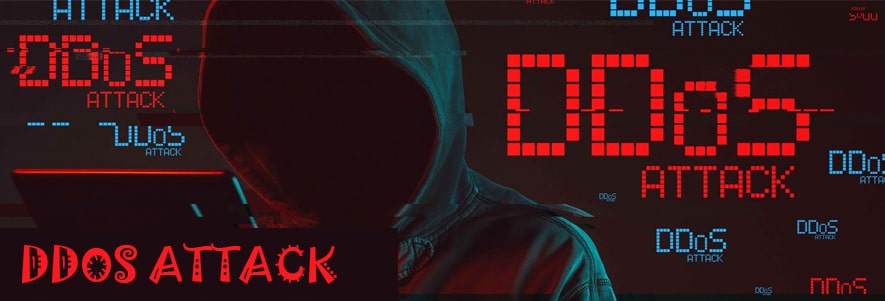
Injecting huge traffic on a website and make the website unavailable to public access is the primary motto of this type of attack. There are different methods of DDoS attack and it is very difficult to recognize the genuine traffic from the traffic caused by the attack.
The attacking mode:
Flooding the website with unusual traffic creates panic in every business and it's too hard to accept in the direct selling business.
As a matter of fact, most of the e-commerce business integrates with direct selling programs. The program boost sales as well as increase the customer network.
The rivals won't enjoy their growth and try to put hurdles in their journey. They might inject a great volume of traffic from unknown sources. It makes the website or the concerned system inaccessible to visitors or customers.
A business that depends on a website faces a big loss due to this attack and they must be aware of this kind of attack.
- HTTP flood: An HTTP request is a data request between the computers to communicate with each other and it's usually, from the client end to the server end. When too many such requests get into the server, cause too many issues as there exist too many processing requests.
The HTTP request comes from a web browser when it tries to communicate with the application. Standard URL requests are used in this scenario.
- SYN flood: Yet another type of DDoS attack and they are somewhat similar in nature. These types of requests accompanied by an acknowledgment after receiving the requested set of packets. No confirmation received from the other end if too many requests (packets) are sent and finally, there won’t be any answers which cause SYN flood.
- DNS amplification: A server has to respond to data requests and acknowledge the back. What if there occurs too many such data requests? An attacker might use this tactic by sending requests for a larger volume of data and with certain amplification. Here, each DNS packet is sent using a special protocol extension (EDNS0 DNS) or a cryptographic feature to increase the packet size.
The normal requests are thus amplified to a much bigger size and the major side of server resources got used up in this way. You can imagine what will be the result of a usual DDoS attack, where too many requests get initialized and what happens if such requests increase in size? Because of this reason, tracking is very difficult!
These are certain ways to create excessive traffic to a website and the result will be a denial of service.
How the attack affects your system?
The system gets completely collapsed and inaccessible if you get attacked. The entire system might be down suddenly and you will never know the reason unless you check for the source.
A terrible attack if you own an e-commerce store to sell products.
The solution:
Finding the source of such traffic is rather difficult and the best solution is rate-limiting. If too many unwanted requests come from a single source then the server can be set to block that particular IP address. The hit count is taken to stop the flooding and the software package providers must follow this up correctly. Having a web application firewall is the perfect method to minimize the issue and one must consider this scenario.
5. Weak file permissions
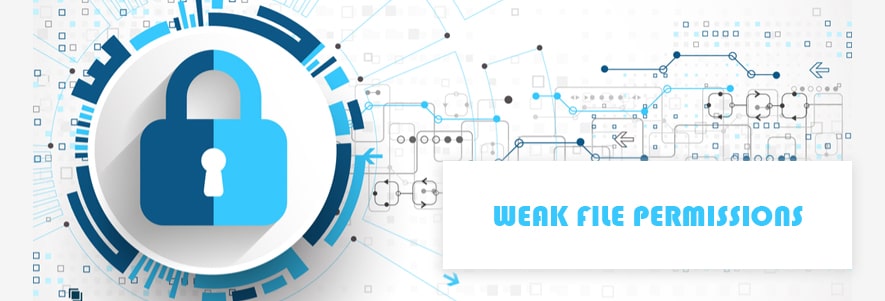
To access any files, you need to have special permissions set from the admin and thus distributors can enjoy such privileges.
The target file system must provide standard permissions from the root access and if not problems begin to arise.
The attacking mode:
As mentioned in the above section, weak file permissions on the files in the software system get explored by an attacker. If the directory permissions are weak, then one may call it a security vulnerability! The one who seeks permission has to request access and after getting permission granted, the server sees him/her as a user.
The attacker gets permission to change the file system and its details. Manipulations can be done and never forget the fact that the system consists of millions of users and their transaction records too.
How the attack affects your system?
Consider a scenario where you’re the admin and have certain privileges meant for you. But that privileges are not set just for you, in fact, for everyone!
Anyone can change the settings and this is a vulnerability. An attacker can create an account in the system and attack with open permissions. The attacker can access the files if the permissions are not set.
The solution:
The file permissions have to be set very accurately to avoid any weaker connections in the system. Permissions have to set with the right parameters and the restricted files are kept in that way that follows the privacy policies.
6. CMS security vulnerabilities
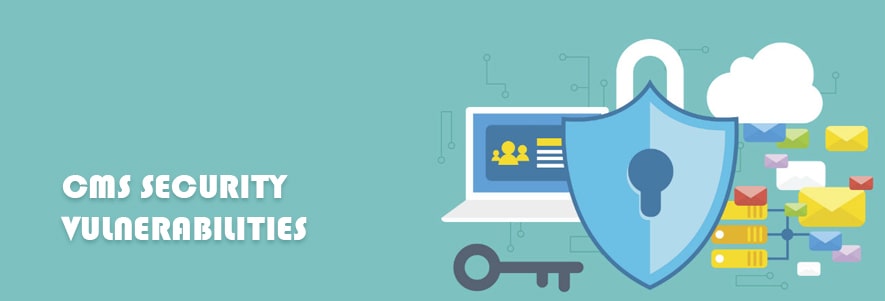
You must have heard about Drupal, Magento, WordPress, etc.
These platforms offer CMS functionalities that let users manage the whole content. But, there are certain issues about these CMS platforms if they are not updated regularly.
The attacking mode:
If your MLM business is automated then there is an 80% probability that your software providers use a CMS platform. Those platforms are regularly met with updates and the team needs to update them with the latest versions. Usually, the new versions are provided to get away from the existing security vulnerabilities. A security patch is provided in the later versions.
If not updated within a short span of time, the attackers will find the loopholes and explore those areas.
How the attack affects your system?
CMS vulnerability is a serious issue based on the CMS development platform flaws. Some of the bugs in the platform might not get reported and saved for later for certain profit reasons.
An attacker or hacker might find them and attack the system within no time. There won't be any time left for vulnerability discovery. The attacker who found the issue might also use the discovery for future demand. Hence it is also known as Zero-day vulnerability.
The solution:
The solution is simple and it's from the developer end at the exact time. Your client must be aware of performing the updates if any available.
It's important to update the system. If not the attackers might crack inside the system through and attack. The attacker can transfer all the digital money in the wallet or the worst, everything!
Proper security patches rolled out in time to make the system secure from the vulnerability.
7. Control panel attack
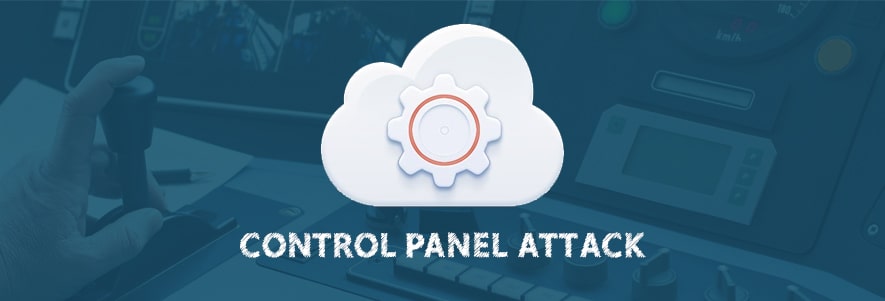
Cpanel, Plesk or similar kind of web control panels help to manage the web hosting services with many functionalities. Its a web hosting management software tool to set up emails, configure FTP accounts, CDN’s, etc.
But there are certain vulnerabilities or loopholes to exploit from the intruders.
The attacking mode:
Does your web hosting team provide you Cpanel access to gain control of your website and server functionalities? If yes, then you might be familiar with them and if the answer is no then the web host team itself might be in control and you ask them to do it for you. But do you know about the security vulnerabilities caused by them?
Attackers might do the trick of accessing the URL from their end and hack into them with various methods.
phpMyAdmin is also vulnerable to these attacks and the public availability of Cpanel address is a weak point of exploitation.
In simple words, alongside the advantages of having access, there are certain loopholes. In MLM business, it’s important to keep the complete data inaccessible to the outside world and provide the most security. If the attacker is able to break-in via Cpanel then the complete server control can be easily gained alongside the database. Basically, the attacker gets control over the entire system.
How the attack affects your system?
If your system comes with a control panel then the probability of getting attacked is high. The reason for the attack chances in your system is having open access to the Cpanel. The attacker can get control of such web control panels, they could use some tools to crack the username & password.
A simple way to get inside the system and gain full server control!
The solution:
To keep things secure from all the vulnerabilities, the initial factor to consider will be regular updates. Like the regular updates in developing platforms (CMS), Cpanel or similar hosting managing tools should update regularly.
The next security measure to perform will be providing a multi-factor authentication which is an extra layer of security to verify the user’s identity. Before the user gets the access of Cpanel or the web control panel, one has to verify the identity first and if the user is verified then s/he will get the Cpanel URL access. Only verified users can access web host management functionality. The next method is to hide the Cpanel link from intruders by setting proper permissions where valid users can only gain access.
These three methods can help an MLM system to get away from similar troubles. It's recommended to follow every single method provided in the above section.
8. OS Command injection
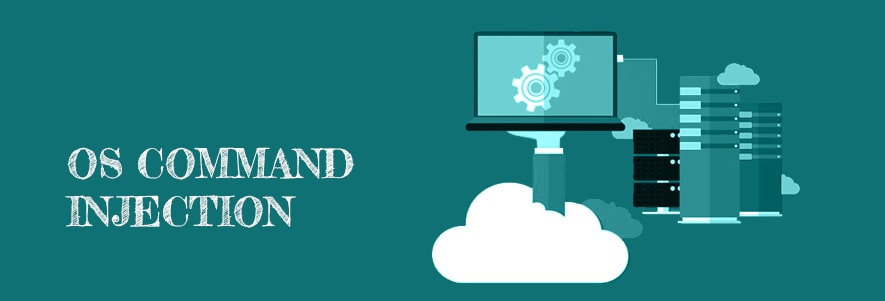
OS Command injection is one of the command-based attacks that might trigger security vulnerabilities in a software package. The attack defined as follows,
"Arbitrary commands execution in host OS from an external source via vulnerable applications."
The attacking mode:
Command injection is also known as shell injection where attacker executes OS commands on the server that runs the application. It is considered as a blind vulnerability among the list. Here the application doesn’t return output from the commands with an HTTP response.
Usually, the attack occurs once the app gets through unsafe cookies, forms, etc. This vulnerability will attack the server and connected roots if the permissions are not set correctly. The entire system might get an impact from this attack and determined once the website faces certain issues.
How the attack affects your system?
Injecting malicious code in the OS system and when you run it, the server data will be attacked.
The solution:
The best method to get a solution from the command injection is to avoid user-controlled data from the OS commands. Reject inaccessible code and proper validation is necessary to get rid of the issue.
9. Buffer overflow

Usually, a buffer memory allocated to contain strings and integers with a specific size. Everything does have a specific capacity, isn’t it? What if more data is added to the buffer size, the data will overflow and a similar thing happens in a buffer overflow.
The attacking mode:
If too much data is stuffed in a buffer than its storage capacity then it causes an overflow. Data overflow to the adjacent storage and causes software crashes. In an MLM Software, it's important to have a neat and strong coding, if not these kinds of stuff cause security vulnerabilities.
The software will crash once the buffer overflow occurs and often the adjacent storages get over-written from this cause. It opens up a weak point to the attackers and they can easily find such vulnerabilities as there exist many website scanning tools. Attackers can use this cause to alter the data or add malicious code injected into the system and get access to sensitive data.
How the attack affects your system?
This attack can completely crash your server. If a website is not properly secured then the impact of this attack might be huge.
If a certain field in your system is set to a character limit of 256. And if the attacker input one more character, the field gets overflowed. That means the next time you enter some valuable data, then it might be located in some other field.
This causes server vulnerability and the access will be now in the hands of the attacker. The entire website crashes.
The solution:
The best method to cut the chances of becoming a victim of such security vulnerabilities will be proper software testing. Make sure your MLM Software team provides a fully-tested package and provide instant bug fixing support. By proper testing, code validation can be established and rectify during the development stage itself.
10. Directory or path traversal
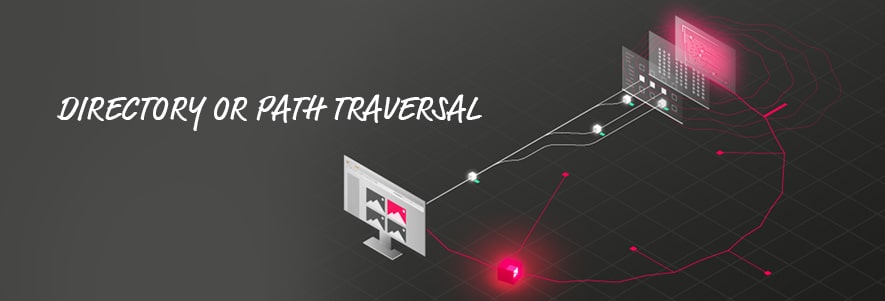
Yet another attack caused by some weak coding status but this time the attackers gain access to every root directory. It’s one of the coding vulnerabilities that cause the directory traversal and yes, it points out the quality of MLM Software system.
The attacking mode:
The mode of attack is usually done through attacking commands and the weaker part of the coding exposed before the attacker. Usually, failure to input sanitization causes the intruders to attack the system with control over the directories. Then traverse through to the other files outside the accessed root file.
This attack can gain information from other directories that might include sensitive data and it’s a simple way to manipulate an application by providing certain codes like ‘../’ and thereby traverse through other directories. If they managed to get access to the important files then they can even trick the system by encoding with new codes. Attackers used to perform a trial & error method and try their best to get access.
How the attack affects your system?
A vulnerable system can collapse easily by means of this attack.
https://abcd.com/hub/i/2019/09/17/tick/firefox.png
If the system is not secure then, the attacker can omit the final part of the link and transverse all the way to the root directory like,
https://abcd.com/hub/i/2019/09/17/tick
https://abcd.com/hub/i/2019/09/17
https://abcd.com/hub/i
https://abcd.com/hub
Here, the attacker gets all the data from the /hub directory which may include usernames, passwords, etc.
The solution:
Saving the day from the attackers is quite a task and the directory traversal attack can be minimized. Certain actions like sanitizing the entire codes and keep the server up-to-date with security patches help to achieve it. Input validation is yet another way to resolve many of the issues in this list very consciously.
Apart from these security risks, one must consider keeping sensitive data from the hands of attackers. This is achievable by using proper encoding or cryptography or similar kinds of technologies.
Broken authentication needs to be checked and need to rectify it before the attackers find the opportunity to crack the data.
- To increase security, change the login credentials from time to time
- Never share the sensible data to others
- Become up-to-date & aware of threats in the digital world.
So, are you aware of most of the security vulnerabilities?
Find yourself safe in a world of such agony and make your network marketing team secure from the threats.
We recommend trying Epixel, we're following every security considerations properly. Also, we conduct security tests often to assure there ain't loopholes in our system.
Apart from the security considerations, we've more security features to offer like,
- GDPR compliances
- PCI compliance
- Secure access control
- Two-factor authentication,
- KYC modules,
- Bypass uploading a malicious file,
- Bruteforce detection & prevention,
- Auto-logout after session expiry,
- Audit logs,
- Secure admin access,
- Database encryption,
- Web application firewall,
- Secure payout system, etc.
Providing a well-secured package is what we focus on with regular security fixes & up-to-date technology integrations.




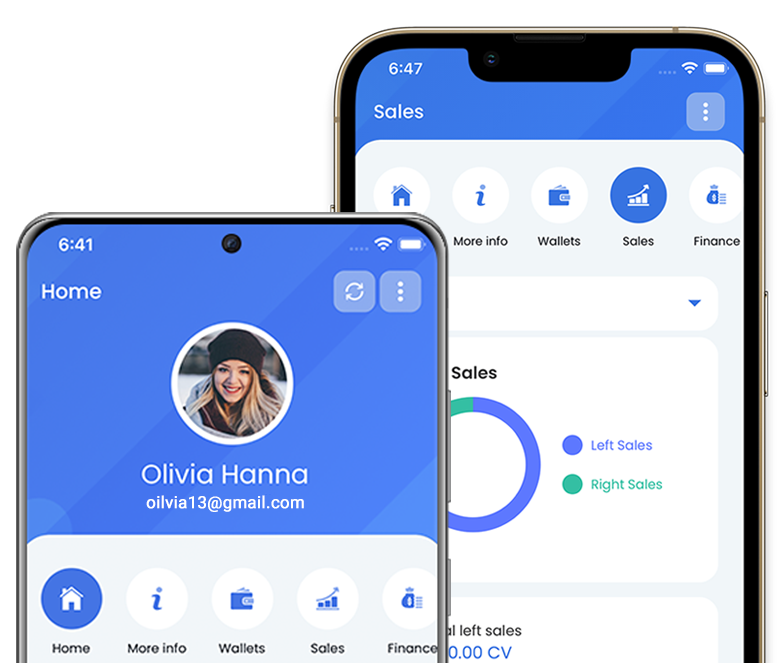
Leave your comment
Fill up and remark your valuable comment.